Small group instruction is a powerful tool in the teacher’s arsenal, offering targeted support, personalized attention, and enhanced student engagement. Whether you’re a seasoned educator or a new teacher looking to optimize your classroom practices, understanding and implementing effective small group instruction strategies can make a remarkable difference in student outcomes.
In this blog, we will explore proven techniques, practical tips, and thoughtful insights to help you provide effective small group instruction. Through common questions I receive, I will help you better understand how to prepare for effective small group instruction.
From forming groups and selecting appropriate activities to managing time and differentiating instruction, this resource aims to equip you with the knowledge and tools needed to create meaningful learning experiences that meet the diverse needs of your students. Get ready to unlock the true potential of small group instruction and revolutionize your classroom dynamics!
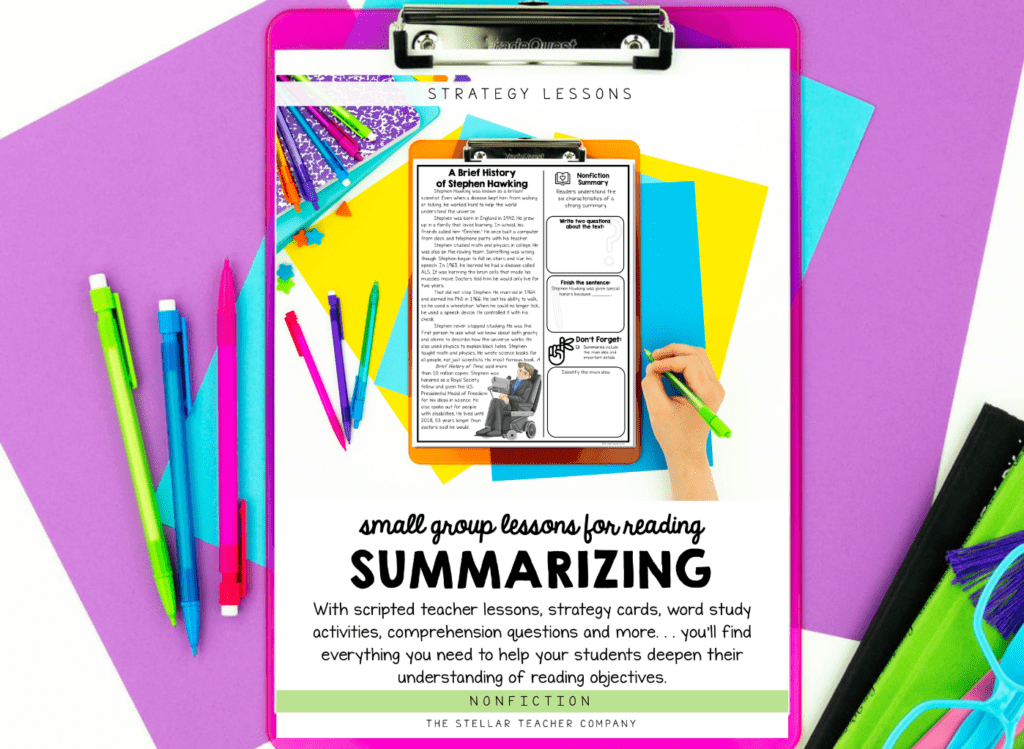
Question #1: How do you form effective small groups with a large class size? I have (had) 28 students in my class, and that’s a lot of groups to manage!
Forming reading groups is a foundational step for effective small group instruction. When you are forming groups, there are two things to think about:
- How many groups can I really fit into my weekly schedule?
- How many students can I realistically fit at my small group table?
Before you assess your students to figure out the groups, consider the above questions before making any decisions.
The answers to these questions will impact how you form your groups!
Ideally, your small groups should be between 5-6 students because…
- Groups of 7 or more makes it difficult to treat your lessons like a small group.
- It takes a lot of work to squeeze 7 kids around a small group table.
- It’s hard to find text sets with 7 books.
- It’s hard to differentiate and engage 7 kids at your small group table.
If your groups are less than 3 or 4, you might have TOO many groups, which can be a problem too!
I suggest…
- At a bare minimum, meet with all small groups at least once a week.
- Ideally, you’d be able to meet with all groups twice a week for effective small group instruction.
- And your more intensive groups could get 3, maybe 4 small group sessions per week!
If you have 28 students and 5-6 students in each small group, that means you would have 5 total reading groups. Five is a really great number because that means you could meet with each group at least once a week with the possibility of meeting more!
Okay, that is the first step to forming groups for effective small group instruction. Part two focuses on who goes in what groups? Now you are going to need to assess your students. Gather as much information as possible about their overall reading abilities.
Here are a few ideas:
- You could administer a phonics or spelling inventory to understand their specific word recognition skills and needs.
- You could administer an oral reading assessment to gauge their fluency and reading accuracy (which will also help get a general idea of word recognition).
- Your district might have some beginning-of-year assessments that want you to give your students – use this data to help form your groups!
In addition to those ideas, I have a couple of disclaimers:
- If a student struggles with word recognition, listening to them read and ask comprehension questions isn’t really going to give you an accurate picture of their comprehension.
- Be cautious of using reading passages with multiple-choice questions to form groups…. If you are not listening to students, read, you really have no idea of their fluency or accuracy.
Remember:
- It is better to form small groups based on some data than no data!
- Groups can (and will!) change over time.
- The more you get to know your students as readers, the more clear and effective groups will become.
- It is better to get started and adjust as needed, than wait too long to form groups!
Question #2: I feel like there are so many different types of small groups; how do I know what type of group I should use with my students? (ex: book clubs, guided reading, guided phonics, strategy lessons etc.)
This is such a great question! How do you decide which strategy will provide the most effective small group instruction? There are so many different ways you can structure small group lessons, so let’s talk about your options:
- Book Clubs:
- Students can be a mix of reading levels or grouped by similar reading levels.
- Assign specific roles: discussion leader, summarizer, vocabulary collector, connector, etc.
- The teacher acts as a facilitator during small groups.
- Guided Reading:
- Students are grouped according to their reading level.
- Work through a leveled text and focus on vocabulary, overall understanding, and writing about a text.
- Groups are usually consistent for a few months.
- Guided Phonics:
- Students are grouped according to their phonics skills.
- Phonemic Awareness Practice
- Phonics Review
- New Phonics Target Practice
- Practice reading in a decodable text.
- Spelling Dictation
- Strategy Lessons
- Focus is on one specific strategy, usually one that has already been taught during whole-group or guided reading.
- Students bring their own texts to practice a particular objective.
- Students are grouped based on their instructional needs.
- Groups are flexible and ever-changing.
Now, here are some things to consider as you decide which type and structure you want for your small groups:
- What do my students need? If you have a student who struggles with word recognition skills, having them in a book club will not help them grow as a reader. They are going to need intensive support with phonics skills. The type of group you use is dependent upon your student’s needs.
- What are my strengths as a teacher? It is so important to consider your strengths as a teacher too. Structure your small group lessons in a way that will allow you to feel confident that you are meeting your student’s needs during small group instruction.
- How can I provide the most effective small group instruction? There is more than one way to have success with your small groups! Don’t be afraid to try a strategy out; if it isn’t effective, you can switch it up.
And this point leads me to my next frequently asked question…

Question #3: How often should I change or switch my small groups?
You may not like this answer, but it is the truth… you should switch your groups as often as your students need.
I believe the most effective small group instruction happens when you put your student’s needs first.
Let’s talk through some scenarios:
- Suppose you have a group of students structured more like a book club. You are working through a complex novel and digging deep into character analysis, text structure, and breaking down vocabulary words… In that case, that novel study might take an entire quarter or even an entire semester.
- On the other hand, if you have a small group focused on different types of syllables and you realize after introducing Vowel Team syllables some of your students don’t know all the vowel team spelling patterns, you can take a pause and assemble a small group of 3-4 students for an intensive phonics lesson.
- After you have collected data or taken an assessment, take a look at your small groups and look for any changes that may be necessary. Most schools do a beginning, middle, and end-of-year assessment, so if you get your MOY assessments and still need to switch up your groups, this is a good time to look at data and consider making changes.
Question #4: I struggle with time management. I try to plan my groups for 15 minutes, but they usually end up being more like 20, and then I can never get through as many groups as I have planned. How can I make sure my small groups don’t go too long?
Time management might be the trickiest part of providing effective small group instruction. If time management is something you struggle with, I encourage you to be realistic with yourself and your schedule.
I am guilty of overestimating what I can get in a specific amount of time. Anybody else guilty? No worries! Let’s talk about:
- When I taught 2nd grade, I had 45 minutes for centers and planned on meeting 3 groups for 15 minutes each.
- But that 45 minutes included two different transition times. It never failed that something would take my attention away midway through.. So instead of meeting with 3 groups for 15 minutes, I would meet with 2 groups for that amount of time, and the third group would end up being 7 minutes or less.
- I realized it was pointless to try to squeeze in an extra group at the end when I could only get through three groups partially.
- So I changed my small group schedule to allow for two 20 minute groups and then time in the end for a one-on-one conference or a chance for me to assess a student.
This schedule change felt much more realistic and allowed me to provide more effective small group instruction for each group!
Here are a few other time management tips:
- Have all your materials prepared and planned.
- Set a timer.
- Have a lesson structure or script.
- Practice small group routines with your students.
These are just a handful of my many questions about providing effective small group instruction! If this blog inspired you, I encourage you to take the next few steps to help set you and your small groups up for success this school year!
Small Group Lesson – Inferring Character Traits
Are you ready to get started with small group lessons, but not exactly sure what to do with your students once you get them to your small group table? I’ve been there. One of the things that helped me with my small group lessons was having a super simple framework that I could use for my small group lessons no matter the level of my students or the focus for our lesson.
When it comes to teaching small groups, I like to use what I call the 4T Model: Target, Teach, Tackle, Transfer.
👇 Grab this free download to learn more about how you can use the 4T Model with your small groups.
In this free download, you’ll get:
• A teacher guide to explain the 4T model
• Lesson plan template + sentence starts
• Sample lesson + materials for inferring character traits
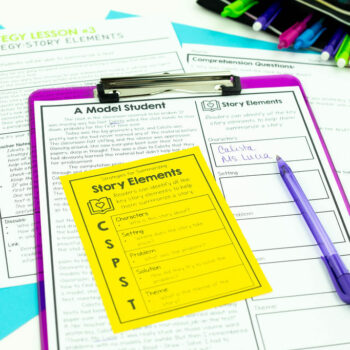
Think about your next steps…
- Are you ready to get started with small group lessons, but not exactly sure what to do with your students once you get them to your small group table? I’ve been there! Download my Small Group Lesson Freebie! In this free download you will learn more about a simplified and manageable model to help you get started with your small groups.
- Check out Episode #140 of my podcast to help you prep for effective small group instruction next school year!
- Join us inside The Stellar Literacy Collective, where you will get access to a resource library filled with reading and writing resources that you can use for small group instruction – including 3rd & 4th Grade Small Group Lessons, book club resources, vocabulary routines, and more!


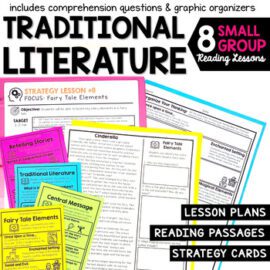
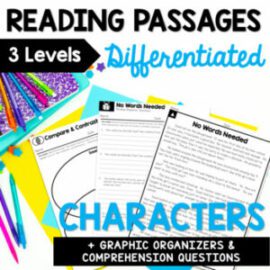
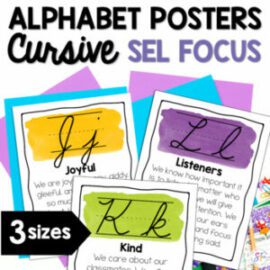
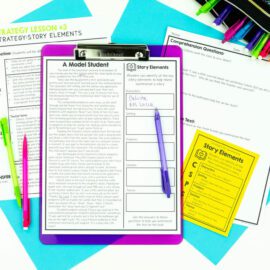
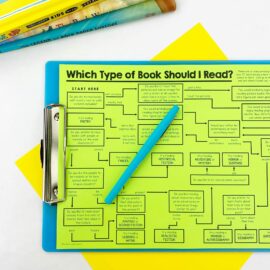
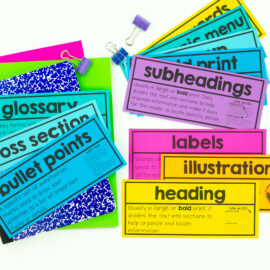









Leave a Comment
You must be logged in to post a comment.